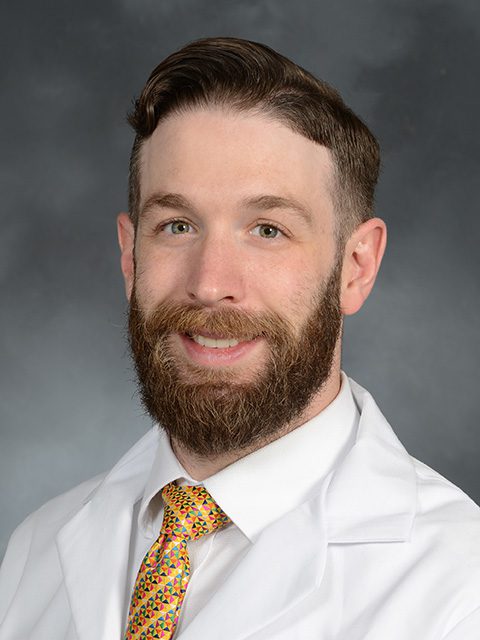What is a Wake-Up Stroke?
A neurologist explains what happens when a stroke occurs during sleep, the symptoms people may experience, and how wake-up strokes are treated.

When it comes to treating a stroke, time is critical. In most cases, strokes should be treated within a window of less than four and a half hours from when symptoms start; and getting treated within the first hour leads to better outcomes. But what happens when someone wakes up with stroke symptoms and they are unable to pinpoint when they began? These strokes that happen during sleep are known as wake-up strokes and account for approximately one in five acute ischemic strokes, studies show.
People who experience overnight strokes will wake up with signs, such as a droopy face, change in speech, loss of vision and coordination, and weakness or numbness on one side. “Most of our treatments for stroke are based off on a timeframe of 4.5 hours from when someone had a stroke,” says Dr. Baxter Allen, a neurocritical care specialist and attending neurologist at NewYork-Presbyterian/Weill Cornell Medical Center and New York-Presbyterian Queens. “The problem with wake-up strokes is that patients are not able to determine how long ago the stroke happened. We have protocols in place for these types of strokes, but it’s important for patients to seek emergency care as soon as possible.”

Dr. Baxter Allen
Health Matters spoke with Dr. Allen to better understand wake-up strokes, how they are treated, and what to keep in mind if you or your loved one wakes up with signs of a stroke.
What are the symptoms of a wake-up stroke?
Dr. Allen: Symptoms of a wake-up stroke are the same as any stroke. If you notice droopiness in your face, if your arm is falling when you try and hold it up, or there are changes in speech, then time is of the essence. If you can, call 911 or call for help. The patient should get to the hospital as soon as possible via an ambulance. The sooner they get to us, the sooner that we can potentially get them treatment.
Is there a type of stroke that is more common in wake-up strokes? What could cause a stroke to happen while someone is asleep?
The vast majority of strokes are ischemic strokes, and this is true for both wake-up strokes and those that occur when someone is already awake. Acute ischemic strokes are where a blood clot blocks blood flow to the brain and are one of two main types of strokes. Hemorrhagic strokes are the other type. We typically talk about strokes based off what causes them — the three most common causes are: cardioembolic strokes, which happen when the heart sends unwanted materials to the brain, blocking blood vessels and damaging brain tissue; small vessel disease, which cause strokes through chronic narrowing of small vessels in the brain that eventually become blocked; and larger artery atherosclerosis, which causes strokes either through progressive, chronic narrowing and eventual complete blockage; or by small clots suddenly forming where an artery is already narrowed.
Typically, what is the treatment for stroke? How does that differ from people who experience a wake-up stroke?
Patients are typically treated with thrombolytic medications called tPAs, which break up blood clots that block blood flow in the brain. These clot-busting medications are given within 4.5 hours of having an acute stroke and are the only approved specific medications to treat disabling acute stroke with proven safety and efficacy. Minor ischemic strokes in this same time frame can be safely treated with aspirin and/or clopidogrel, which are milder blood thinners that stop small blood cells called platelets from clumping together and causing clots.
In the case of a wake-up stroke, we cannot confirm when someone had the stroke based on their story and might not be able to give them tPAs. There is evidence, however, that many wake-up stroke cases occur close to when a person wakes up. These patients may still be eligible and benefit from tPAs. Imaging helps guide us to determine which patients would be eligible.
Patients can also be treated with an interventional procedure called mechanical thrombectomy, where a surgeon uses a catheter placed into an artery to try and directly remove a large blood clot blocking blood flow. This can be done in patients — within 24 hours of their last known well time — if there is a significant area of brain at risk of injury compared to an area that has already become a completed stroke.
When a patient arrives at the hospital, what kinds of imaging do they undergo to help determine if they are eligible for treatment?
Typically, we would say patients would likely benefit from a tPA if the brain tissue were salvageable. To identify these patients, we can do several imaging tests. We usually start with a CT scan to make sure there is no bleeding or a large early area of stroke already visible. We will also do a CT angiogram of the head and neck, which is an imaging study using contrast injected into an IV to look for blocked blood vessels. We may also do another scan called a CT-perfusion scan. This type of imaging looks at how blood is getting to the brain, helping to identify the areas that are at risk of injury by getting blood too slowly, and the parts that are likely already injured and cannot be saved by removing the blood clot.
In some wake-up strokes, we may instead do a rapid MRI of the brain. MRI lets us look at many different things, allowing us to determine the best course of treatment.
What does the recovery look like?
It depends on the severity of symptoms, when the patient comes in, and if they are eligible for a treatment. We do see a significant percentage of patients make a complete functional recovery. Full or functional recovery is measured at three months from the time symptoms started, which means they have had time for the body to recuperate, to work with physical therapy, occupational therapy, and sometimes targeted speech and swallowing therapy. And over that time, with all those therapeutic options, they can make significant improvements.
Baxter Ballantine Allen, M.D. is a neurocritical care specialist and an attending neurologist at NewYork-Presbyterian/Weill Cornell Medical Center and New York-Presbyterian Queens, and an assistant professor of clinical neurology at Weill Cornell Medicine. Board certified in neurology, neurocritical care, and clinical neurophysiology, Dr. Allen has a special focus on stroke, subarachnoid hemorrhage, traumatic brain injury, seizures, and other acute neurological conditions.
Active in research, Dr. Allen is currently studying traumatic brain injury leading to post-traumatic epilepsy, effective therapies for head injuries, and the detection of seizures. He is a member of the American Academy of Neurology, the American Epilepsy Society, and the Neurocritical Care Society.
Additional Resources
Learn more about the Stroke, Critical Care, and Neurohospitalist Program at NewYork-Presbyterian/Weill Cornell Medical Center.
